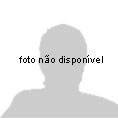XINFORMAÇÕES SOBRE DIREITOS AUTORAIS
As obras disponibilizadas nesta Biblioteca Digital foram publicadas sob expressa autorização dos respectivos autores, em conformidade com a Lei 9610/98.
A consulta aos textos, permitida por seus respectivos autores, é livre, bem como a impressão de trechos ou de um exemplar completo exclusivamente para uso próprio. Não são permitidas a impressão e a reprodução de obras completas com qualquer outra finalidade que não o uso próprio de quem imprime.
A reprodução de pequenos trechos, na forma de citações em trabalhos de terceiros que não o próprio autor do texto consultado,é permitida, na medida justificada para a compreeensão da citação e mediante a informação, junto à citação, do nome do autor do texto original, bem como da fonte da pesquisa.
A violação de direitos autorais é passível de sanções civis e penais.
As obras disponibilizadas nesta Biblioteca Digital foram publicadas sob expressa autorização dos respectivos autores, em conformidade com a Lei 9610/98.
A consulta aos textos, permitida por seus respectivos autores, é livre, bem como a impressão de trechos ou de um exemplar completo exclusivamente para uso próprio. Não são permitidas a impressão e a reprodução de obras completas com qualquer outra finalidade que não o uso próprio de quem imprime.
A reprodução de pequenos trechos, na forma de citações em trabalhos de terceiros que não o próprio autor do texto consultado,é permitida, na medida justificada para a compreeensão da citação e mediante a informação, junto à citação, do nome do autor do texto original, bem como da fonte da pesquisa.
A violação de direitos autorais é passível de sanções civis e penais.
Coleção Digital
Título: ENHANCED Q-NAS FOR IMAGE CLASSIFICATION Autor: JULIA DRUMMOND NOCE
Instituição: PONTIFÍCIA UNIVERSIDADE CATÓLICA DO RIO DE JANEIRO - PUC-RIO
Colaborador(es):
MARLEY MARIA BERNARDES REBUZZI VELLASCO - ADVISOR
KARLA TEREZA FIGUEIREDO LEITE - CO-ADVISOR
Nº do Conteudo: 61015
Catalogação: 31/10/2022 Liberação: 31/10/2022 Idioma(s): ENGLISH - UNITED STATES
Tipo: TEXT Subtipo: THESIS
Natureza: SCHOLARLY PUBLICATION
Nota: Todos os dados constantes dos documentos são de inteira responsabilidade de seus autores. Os dados utilizados nas descrições dos documentos estão em conformidade com os sistemas da administração da PUC-Rio.
Referência [pt]: https://www.maxwell.vrac.puc-rio.br/colecao.php?strSecao=resultado&nrSeq=61015&idi=1
Referência [en]: https://www.maxwell.vrac.puc-rio.br/colecao.php?strSecao=resultado&nrSeq=61015&idi=2
Referência DOI: https://doi.org/10.17771/PUCRio.acad.61015
Resumo:
Título: ENHANCED Q-NAS FOR IMAGE CLASSIFICATION Autor: JULIA DRUMMOND NOCE
KARLA TEREZA FIGUEIREDO LEITE - CO-ADVISOR
Nº do Conteudo: 61015
Catalogação: 31/10/2022 Liberação: 31/10/2022 Idioma(s): ENGLISH - UNITED STATES
Tipo: TEXT Subtipo: THESIS
Natureza: SCHOLARLY PUBLICATION
Nota: Todos os dados constantes dos documentos são de inteira responsabilidade de seus autores. Os dados utilizados nas descrições dos documentos estão em conformidade com os sistemas da administração da PUC-Rio.
Referência [pt]: https://www.maxwell.vrac.puc-rio.br/colecao.php?strSecao=resultado&nrSeq=61015&idi=1
Referência [en]: https://www.maxwell.vrac.puc-rio.br/colecao.php?strSecao=resultado&nrSeq=61015&idi=2
Referência DOI: https://doi.org/10.17771/PUCRio.acad.61015
Resumo:
Deep neural networks are powerful and flexible models that have gained
the attention of the machine learning community over the last decade. Usually,
an expert spends significant time designing the neural architecture, with
long trial and error sessions to reach good and relevant results. Because
of the manual process, there is a greater interest in Neural Architecture
Search (NAS), which is an automated method of architectural search in
neural networks. NAS is a subarea of Automated Machine Learning (AutoML)
and is an essential step towards automating machine learning methods. It
is a technique that aims to automate the construction process of a neural
network architecture. This technique is defined by the search space aspects
of the architectures, search strategy and performance estimation strategy.
Quantum-inspired evolutionary algorithms present promising results regarding
faster convergence when compared to other solutions with restricted search
space and high computational costs. In this work, we enhance Q-NAS: a
quantum-inspired algorithm to search for deep networks by assembling simple
substructures. Q-NAS can also evolve some numerical hyperparameters, which
is a first step in the direction of complete automation. Our contribution involves
experimenting other types of optimizers in the algorithm and make an indepth
study of the Q-NAS parameters. Additionally, we present Q-NAS results,
evolved from scratch, on the CIFAR-100 dataset using only 18 GPU/days.
We were able to achieve an accuracy of 76.40% which is a competitive result
regarding other works in literature. Finally, we also present the enhanced QNAS
applied to a case study for COVID-19 x Healthy classification on a real
chest computed tomography database. In 9 GPU/days we were able to achieve
an accuracy of 99.44% using less than 1000 samples for training data. This
accuracy overcame benchmark networks such as ResNet, GoogleLeNet and
VGG.
| Descrição | Arquivo |
| COMPLETE |






